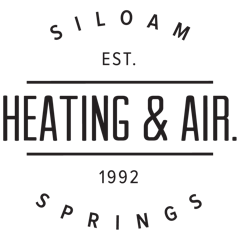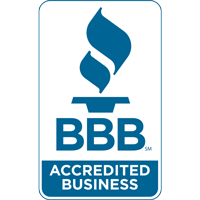
Ceiling fans are one of the most underappreciated ways to enhance comfort and reduce energy costs. By enhancing air circulation and supporting your HVAC system, ceiling fans and energy efficiency are truly a natural pairing. They offer a practical, energy-efficient way to stay cool while easing strain on your AC—potentially sparing you from unnecessary air conditioning repair.
In this blog, the experts at Siloam Springs Heating & AC discuss how ceiling fans can improve your comfort while lowering your energy use with higher HVAC efficiency. We'll also share some HVAC efficiency tips that put to good use ceiling fans.
Comfort vs. Temperature: The Effect of the Wind-Chill Effect Indoors
Ceiling fans don’t actually lower the room temperature—they make you feel cooler by blowing air across your skin. This is known as the wind-chill effect, and it can make a room feel up to 4 degrees cooler without adjusting the thermostat. That means you remain cool and enjoy the benefits of indoor air circulation from your ceiling fan while minimizing air conditioner use—helping reduce your electric bill in summer.
The Best of Both: Advantages of Pairing Fans and Air Conditioning Together
There are several benefits to using ceiling fans and air conditioning at the same time, especially when it's very hot outside. By combining both, you boost HVAC efficiency and enjoy a cooler living space with less strain from your cooling system.
Benefits of using ceiling fans and AC together:
- Ceiling fans help lower HVAC load by distributing cool air more evenly throughout rooms in your home. Reducing HVAC stress is important, because it can help you avoid a breakdown that could result in premature AC or furnace installation.
- Using ceiling fans improves your indoor comfort by reducing uneven temperatures and enhancing circulation.
- Pairing ceiling fans and AC can reduce overall energy use. If you have a home automation system, you can even adjust your smart thermostat settings to increase the temperature slightly while your ceiling fan is running.
Clockwise vs. Counterclockwise Ceiling Fan Rotation: Which is the Correct Direction?
To get the most out of your ceiling fans year-round, it’s important to ensure blades are rotating in the proper direction for the season. The direction impacts how air circulates, which can either make you feel cooler or push warm air downward so you feel warmer.
When to spin ceiling fans counterclockwise
When it's hot outside, ceiling fans should turn counterclockwise at a higher speed. This creates a breeze that moves air toward the floor, enhancing the wind-chill effect and creating a cooler sensation.
When to rotate ceiling fans clockwise
When it's cold out, set your fan to turn clockwise on a gentle setting. This lifts cooler air and draws warm air downward from the ceiling, making the space feel cozier without touching your thermostat.
How to Pick Out the Best Ceiling Fan for My Home
Picking the right ceiling fan depends on a few critical considerations, such as blade design, airflow rating and room dimensions. First, look for fans that have a good combination of ECFM airflow and blade pitch to provide efficient air circulation in your space:
- ECFM refers to the amount of air a fan pushes—the cubic feet per minute, or CFM—per watt of electricity it uses. Fans with greater ECFM are the most energy efficient.
- Blade pitch refers to the incline of the blades. A steeper blade pitch increases airflow but can also put extra load on the motor.
Also, consider room size when sizing a ceiling fan—a fan that’s too small won’t circulate sufficient air, while one that’s too big may be disruptive in a smaller room.
Raise Your HVAC Efficiency With Help from Siloam Springs Heating & AC
At Siloam Springs Heating & AC, our HVAC specialists can help you enjoy year-round comfort while reducing strain on your heating and cooling systems. From efficient ceiling fan strategies and air conditioning installation to smart thermostats and furnace repair, we offer comprehensive solutions that work with your budget. Set up your appointment by calling 479-448-2261 today.


